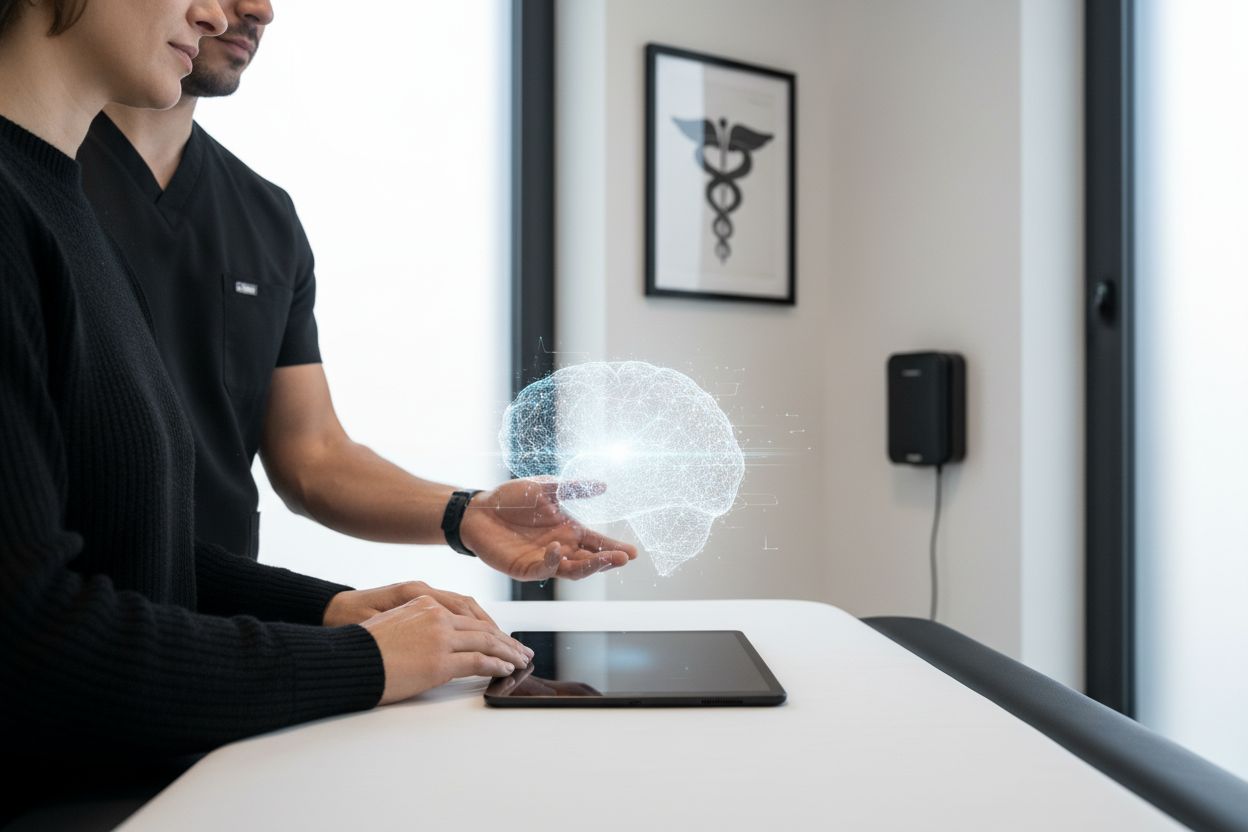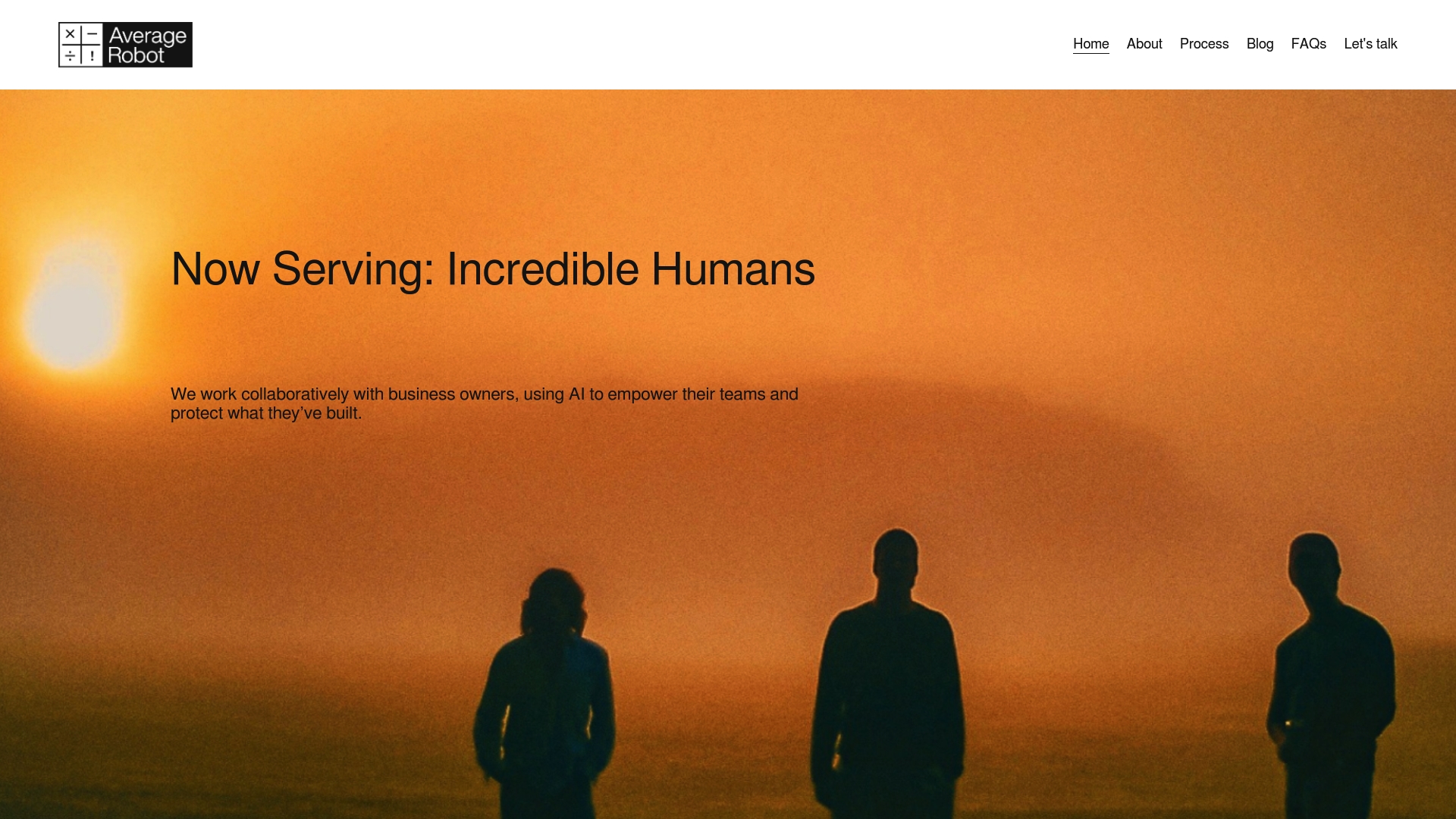What is People-Centered AI? Understanding Its Impact

People-centered AI is changing what we expect from technology by placing human values ahead of raw computing power. Most leaders fixate on efficiency and automation, but new research shows a different story. Companies that embrace human-centric AI see significantly higher employee engagement and performance according to McKinsey. This flips the script on traditional tech adoption and hints at how the next AI wave is about human potential, not just algorithms.
The table below highlights key differences between traditional AI approaches and the people-centered AI philosophy, offering a side-by-side comparison for clearer understanding.
| Traditional AI Focus | People-Centered AI Focus |
|---|---|
| Automation and efficiency | Human agency and empowerment |
| Purely technical decisions | Ethical and transparent design |
| Replacing human tasks | Augmenting human capabilities |
| Uniform outputs | Personalization and inclusivity |
| Data-driven optimization | Alignment with human values |
Table of Contents
- Defining People-Centered AI: Concepts And Principles
- The Importance Of People-Centered AI In Business
- How People-Centered AI Enhances User Experience
- Real-World Applications Of People-Centered AI
- Frameworks For Implementing People-Centered AI
Quick Summary
| Takeaway | Explanation |
|---|---|
| Prioritize human values in AI | People-centered AI focuses on human dignity, agency, and ethical considerations, reshaping technology development. |
| Enhance collaboration between AI and humans | Effective AI systems should augment human capabilities, fostering creativity rather than replacing it. |
| Commit to transparency in AI systems | Clear decision-making processes are essential to build trust and understanding in AI technologies. |
| Develop inclusive AI technologies | AI should be accessible and beneficial across diverse communities to ensure equitable advancements. |
| Implement ethical design principles | AI frameworks must embed human rights and moral considerations to align with societal well-being. |
Defining People-Centered AI: Concepts and Principles
People-centered AI represents a transformative approach to artificial intelligence that prioritizes human values, experiences, and ethical considerations over pure technological capabilities. This philosophy shifts the paradigm from viewing AI as a standalone technological solution to understanding it as a collaborative tool designed to enhance human potential and well-being.
Core Philosophical Foundations
At its heart, people-centered AI recognizes that technology should serve humanity, not the other way around. Research from the Data Society highlights that this approach demands a fundamental reimagining of AI development, placing human agency, dignity, and diverse perspectives at the center of technological innovation. The key principles include:
To clarify the guiding principles behind people-centered AI, the following table summarizes each core concept with its main focus within AI development.
| Principle | Description |
|---|---|
| Inclusivity | Ensuring AI systems are accessible and beneficial across different communities |
| Transparency | Creating AI technologies with clear, understandable decision-making processes |
| Ethical Design | Embedding human values and moral considerations into AI infrastructure |
| Accountability | Establishing mechanisms for human oversight and intervention |
| Personalization | Interpreting individual needs and adapting AI responses for a tailored user experience |

- Inclusivity: Ensuring AI systems are accessible and beneficial across different communities
- Transparency: Creating AI technologies with clear, understandable decision-making processes
- Ethical Design: Embedding human values and moral considerations into AI infrastructure
Practical Implementation
Implementing people-centered AI requires a holistic strategy that goes beyond technical design. Business leaders must actively engage in creating AI systems that are not just efficient, but fundamentally respectful of human complexity. This means developing algorithms that can adapt to nuanced human contexts, recognize individual differences, and provide solutions that empower rather than replace human capabilities.
By embracing this approach, organizations can read more about owner-led AI adoption strategies that prioritize human potential. The goal is not to create AI that operates in isolation, but to develop intelligent systems that work in genuine partnership with human expertise, creativity, and intuition.
The Importance of People-Centered AI in Business
In today’s rapidly evolving technological landscape, businesses must recognize that artificial intelligence is not just a tool to be deployed, but a strategic partner that requires thoughtful integration. People-centered AI represents a critical paradigm shift for organizations seeking sustainable competitive advantage through responsible technological innovation.
Strategic Business Value
People-centered AI delivers profound strategic advantages by aligning technological capabilities with human potential. Research from McKinsey Global Institute indicates that companies successfully implementing human-centric AI approaches experience significantly higher performance metrics and employee engagement. The core business benefits include:
- Enhanced Decision Making: AI systems that complement human intelligence rather than replace it
- Improved Operational Efficiency: Intelligent systems that adapt to unique organizational contexts
- Risk Mitigation: Reducing potential biases and ethical challenges in AI implementation
Human-Technology Symbiosis
Successful AI integration requires viewing technology as an extension of human capabilities, not a replacement.
Business leaders must cultivate an environment where AI augments human creativity, critical thinking, and emotional intelligence. This approach transforms AI from a standalone technological solution into a collaborative tool that empowers teams and drives innovation.
By prioritizing human agency and ethical considerations, organizations can learn more about AI strategies for business leaders that generate meaningful competitive advantages. The ultimate goal is creating intelligent systems that respect human complexity, promote inclusive growth, and unlock unprecedented potential for organizational transformation.
How People-Centered AI Enhances User Experience
People-centered AI transforms user experience by prioritizing human needs, preferences, and emotional contexts over pure technological efficiency. This approach fundamentally reimagines how technology interacts with individuals, creating more intuitive, responsive, and personalized digital interactions.
Personalization and Adaptive Intelligence
Research from ACM Digital Library demonstrates that human-centered AI systems are uniquely positioned to understand and predict individual user preferences with unprecedented accuracy. By integrating emotional intelligence and contextual awareness, these systems move beyond generic interactions to deliver truly tailored experiences. The key strategies include:
- Contextual Understanding: Interpreting user intent beyond surface-level interactions
- Predictive Personalization: Anticipating user needs before explicit requests
- Adaptive Interface Design: Dynamically adjusting digital environments to individual user capabilities
Empowerment Through Technological Interaction
People-centered AI does not aim to replace human agency but to amplify individual capabilities. By creating intelligent systems that respect user autonomy and provide meaningful support, organizations can develop technologies that feel less like impersonal tools and more like collaborative partners. This approach requires a deep understanding of human complexity, including emotional nuance, cognitive diversity, and individual learning styles.
Businesses can explore our AI implementation processes to understand how intelligent systems can be designed with genuine human-centricity. The ultimate objective is creating technological experiences that feel natural, supportive, and fundamentally aligned with human potential.
Real-World Applications of People-Centered AI
People-centered AI is transforming multiple industries by creating intelligent systems that prioritize human experiences, ethical considerations, and contextual understanding. These applications go far beyond traditional technological implementations, focusing on solutions that genuinely enhance human capabilities and address complex societal challenges.
Healthcare and Wellness Innovations
Research from the Journal of Medical Internet Research reveals how people-centered AI is revolutionizing healthcare delivery. By developing AI systems that understand patient experiences, medical professionals can create more personalized, empathetic, and effective treatment approaches. The most promising applications include:

- Personalized Treatment Plans: Adapting medical interventions to individual patient histories and genetic profiles
- Mental Health Support: Developing AI counseling tools that recognize emotional nuances
- Predictive Health Monitoring: Creating intelligent systems that anticipate potential health risks
Organizational Transformation and Workforce Empowerment
People-centered AI serves as a strategic tool for reimagining workplace dynamics. Rather than replacing human workers, these intelligent systems are designed to augment human skills, promote creativity, and address complex organizational challenges. This approach involves creating AI tools that understand team dynamics, individual learning styles, and organizational culture.
Businesses can explore strategies for future-proofing their organizations through intelligent, human-centric technological adoption. The goal is developing AI solutions that respect human potential, promote collaboration, and drive meaningful innovation across diverse professional environments.
Frameworks for Implementing People-Centered AI
Implementing people-centered AI requires a strategic, holistic approach that goes beyond traditional technological deployment. Successful frameworks must address the complex intersections between technological capabilities, human experiences, and ethical considerations.
Foundational Principles and Design Criteria
Research from the European Commission highlights critical elements for developing responsible AI frameworks. Organizations must prioritize approaches that ensure technological systems remain fundamentally aligned with human values and societal well-being. The core design principles include:
- Ethical Alignment: Embedding human rights and moral considerations into AI infrastructure
- Transparency: Creating clear, understandable decision-making processes
- Accountability: Establishing mechanisms for human oversight and intervention
Practical Implementation Strategies
Effective people-centered AI frameworks require a multidisciplinary approach that integrates perspectives from technology, psychology, ethics, and organizational design. This means developing AI systems that are not just technically proficient but emotionally intelligent and contextually aware. Organizations must create environments where AI serves as a collaborative partner, augmenting human capabilities rather than replacing them.
Businesses interested in strategic AI adoption can explore owner-led AI implementation tips to understand how to develop intelligent systems that respect human potential. The ultimate goal is creating technological solutions that feel intuitive, supportive, and fundamentally aligned with individual and organizational needs.
Move Your Business Ahead with People-Centered AI Solutions
Are you finding it difficult to turn complex AI ideas into practical strategies that truly put people first? The article highlights the need for organizations to bridge the gap between advanced technology and real human needs. Many leaders struggle with questions about ethical design, trust, inclusion, and maximizing both employee engagement and customer satisfaction—but often lack a clear path forward.

At Average Robot, we make people-centered AI real for your business. Our proven approach is built on empathy, partnership, and transparency. We help you transform operational efficiency, achieve responsible growth, and future-proof your organization without compromising on human agency or ethical standards. Explore our AI strategies for business leaders or see how our proven AI process creates outcomes you can trust. Visit us at Average Robot now to bring people-centered AI into every part of your organization and create value that lasts.
Frequently Asked Questions
What is people-centered AI?
People-centered AI refers to an approach to artificial intelligence that prioritizes human values, experiences, and ethical considerations over purely technological capabilities. It emphasizes collaboration between AI systems and human users to enhance well-being and potential.
What are the core principles of people-centered AI?
The core principles of people-centered AI include inclusivity, transparency, and ethical design. These principles ensure that AI systems are accessible, understandable, and embedded with human values to respect individual differences and promote ethical outcomes.
How does people-centered AI improve user experience?
People-centered AI improves user experience by focusing on personalization and adaptive intelligence. It involves understanding user intent, predicting needs, and dynamically adjusting interactions to create tailored and supportive digital environments.
What are some real-world applications of people-centered AI?
People-centered AI has impactful applications in various sectors, such as healthcare, where it enables personalized treatment plans and mental health support, and organizational transformation, where it augments human skills and promotes collaboration in the workplace.




